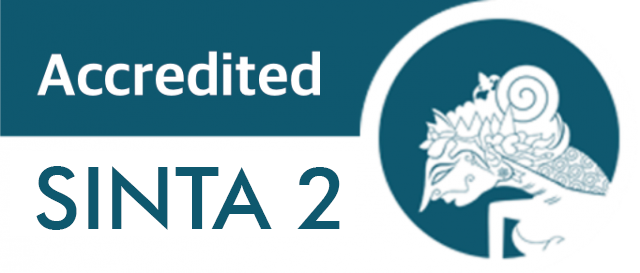Technology Readiness Index in The Application of Blockchain Technology In Indonesian Carbon Exchange

Downloads
The integration of Information and Communication Technology (ICT) with Blockchain technology has indeed brought about significant changes across various aspects of digital economic activities. This study provides a perspective on the influence of blockchain use on the performance of Indonesian Carbon Exchange players. The results of data analysis show that the variables Optimism (p-value 0.001<0.05) and Innovation (p-value 0.000<0.05) in the adoption of blockchain technology have a significant positive influence on the performance of Indonesian Carbon Exchange players. The results of testing the Insecurity variable on social media adoption showed significant negative results with a p-value of 0.002 (<0.05). And the results of testing the Discomfort variable with the adoption of blockchain technology have no influence on the performance of Indonesian Carbon Exchange players with a p-value of 0.074 (>0.05).
Downloads
[1] M. Franco‐Santos et al., "Towards a definition of a business performance measurement system," International journal of operations & production management, vol. 27, no. 8, pp. 784-801, 2007.
[2] A. Laurent, S. I. Olsen, and M. Z. Hauschild, "Limitations of carbon footprint as indicator of environmental sustainability," Environmental science & technology, vol. 46, no. 7, pp. 4100-4108, 2012.
[3] R. J. Holden and B.-T. Karsh, "The technology acceptance model: its past and its future in health care," Journal of biomedical informatics, vol. 43, no. 1, pp. 159-172, 2010.
[4] A. Acquaye, A. Genovese, and J. Barrett, "Benchmarking carbon emissions performance in supply chains," … Chain Management: An …, // 2014, doi: 10.1108/SCM-11-2013-0419.
[5] M. Ahyat, S. Sahar, O. Afriwan, E. Y. Saniah, and A. M. Saputra, "Digital Transformational Leadership A Village Head On Organizational Citizenship Behavior Through Work Climate And Job Satisfaction Village Officials In Lombok Island," Jurnal Manajemen Industri dan Logistik, vol. 6, no. 2, pp. 242-255 %@ 2598-5795, 2022.
[6] S. OCTAVIA, "Pengaruh Indikator Pengelolaan Modal Kerja dan Ukuran Perusahaan Terhadap Profitabilitas," STIE Perbanas Surabaya, 2015.
[7] O. J. Robinson, A. Tewkesbury, S. Kemp, and I. D. Williams, "Towards a universal carbon footprint standard: A case study of carbon management at universities," Journal of Cleaner Production, vol. 172, pp. 4435-4455, 2018.
[8] G. Kabra, A. Ramesh, P. Akhtar, and M. K. Dash, "Understanding behavioural intention to use information technology: Insights from humanitarian practitioners," Telematics and Informatics, vol. 34, no. 7, pp. 1250-1261, 2017.
[9] E. Fatmawati, "Technology acceptance model (TAM) untuk menganalisis penerimaan terhadap sistem informasi perpustakaan," Jurnal Iqra, vol. 9, no. 01, 2015.
[10] M. Andoni et al., "Blockchain technology in the energy sector: A systematic review of challenges and opportunities," Renewable and sustainable energy reviews, vol. 100, pp. 143-174, 2019.
[11] N. C. Astuti and R. A. Nasution, "Technology readiness and e-commerce adoption among entrepreneurs of SMEs in Bandung City, Indonesia," Gadjah Mada International Journal of Business, vol. 16, no. 1, pp. 69-88, 2014.
[12] H.-j. Wang, C.-q. Lu, and O.-l. Siu, "Job insecurity and job performance: The moderating role of organizational justice and the mediating role of work engagement," Journal of applied psychology, vol. 100, no. 4, p. 1249, 2015.
[13] Y. Lee, K. A. Kozar, and K. R. Larsen, "The technology acceptance model: Past, present, and future," Communications of the Association for information systems, vol. 12, no. 1, p. 50, 2003.
[14] M. A. Nugroho, "Impact of government support and competitor pressure on the readiness of SMEs in Indonesia in adopting the information technology," Procedia Computer Science, vol. 72, pp. 102-111, 2015.
[15] T. Zulfikar, I. Aprianti, and E. Rachmawati, "Digital Marketing and Brand Image To Increase Consumer Purchase Interest," Jurnal Manajemen Industri dan Logistik (JMIL), vol. 6, no. 1, pp. 21-29 %@ 2598-5795, 2022.
[16] S. Husen, "Pengaruh Pengeluaran Agregat dalam Mendorong Pertumbuhan Produk Domestik Bruto dan Implikasinya pada Kesejahteraan Sosial," Jurnal Ekonomi, vol. 14, no. 3, pp. 216-246, 2012.
[17] A. A. R. Fernandes, Metode statistika multivariat pemodelan persamaan struktural (sem) pendekatan warppls. Universitas Brawijaya Press, 2017.
[18] C. M. Jones and D. M. Kammen, "Quantifying carbon footprint reduction opportunities for US households and communities," Environmental science & technology, vol. 45, no. 9, pp. 4088-4095, 2011.
[19] D. B. ÖZŞEKER, H. KURGUN, and Ö. K. YOZCU, "The effect of service employees’ technology readiness on technology acceptance," Journal of Tourism & Gastronomy Studies, vol. 10, no. 2, pp. 1016-1039, 2022.
[20] D. Efanov and P. Roschin, "The all-pervasiveness of the blockchain technology," Procedia computer science, vol. 123, pp. 116-121, 2018.
Copyright (c) 2024 Dayan Hakim Natigor Sipahutar, Yoyo Sudaryo, Taufik Walhidayat, Gary Cokins

This work is licensed under a Creative Commons Attribution 4.0 International License.
JMIL Jurnal Manajemen Industri dan Logistik (Journal of Industrial and Logistics Management) is an Open Access Journal. The authors who publish the manuscript in JMIL Jurnal Manajemen Industri dan Logistik agree to the following terms:

JMIL Jurnal Manajemen Industri dan Logistik is licensed under a Creative Commons Attribution 4.0 International License. This permits anyone to copy, redistribute, remix, transmit and adapt the work provided the original work and source is appropriately cited.
This means:
(1) Under the CC-BY license, authors retain ownership of the copyright for their article, but authors grant others permission to use the content of publications in JMIL Jurnal Manajemen Industri dan Logistik in whole or in part provided that the original work is properly cited. Users (redistributors) of JMIL Jurnal Manajemen Industri dan Logistik are required to cite the original source, including the author's names, JMIL Jurnal Manajemen Industri dan Logistik as the initial source of publication, year of publication, volume number, issue, and Digital Object Identifier (DOI); (2) Authors grant JMIL Jurnal Manajemen Industri dan Logistik the right of first publication. Although authors remain the copyright owner.











































